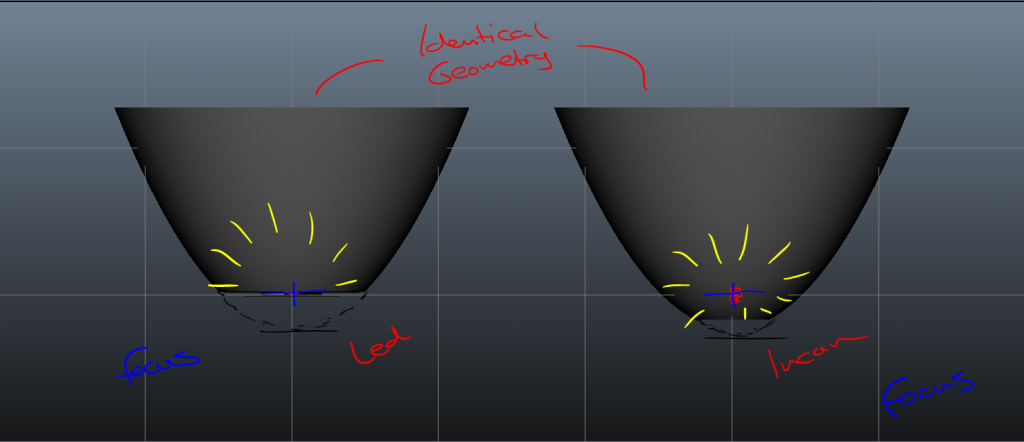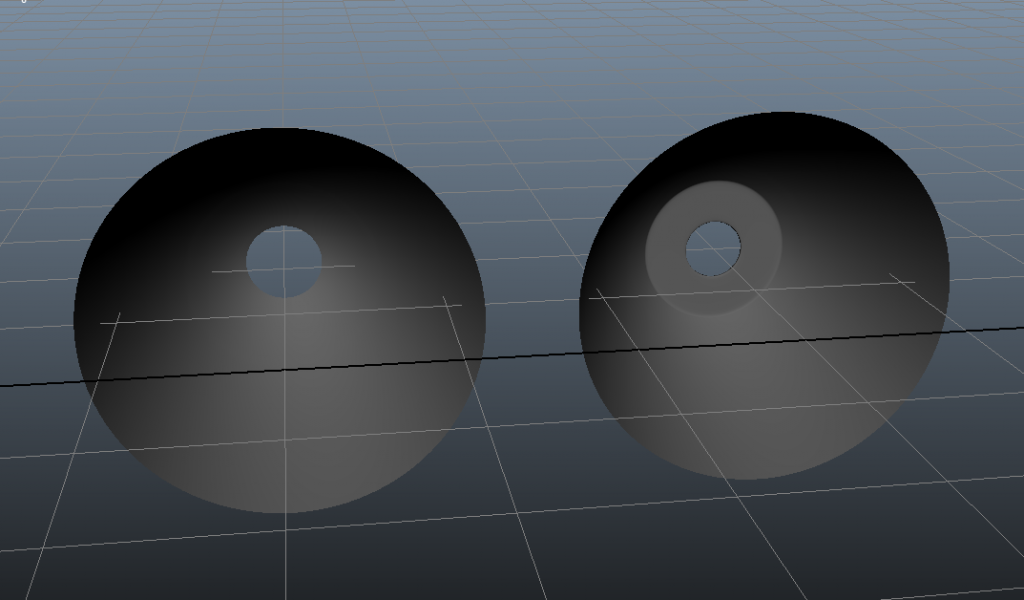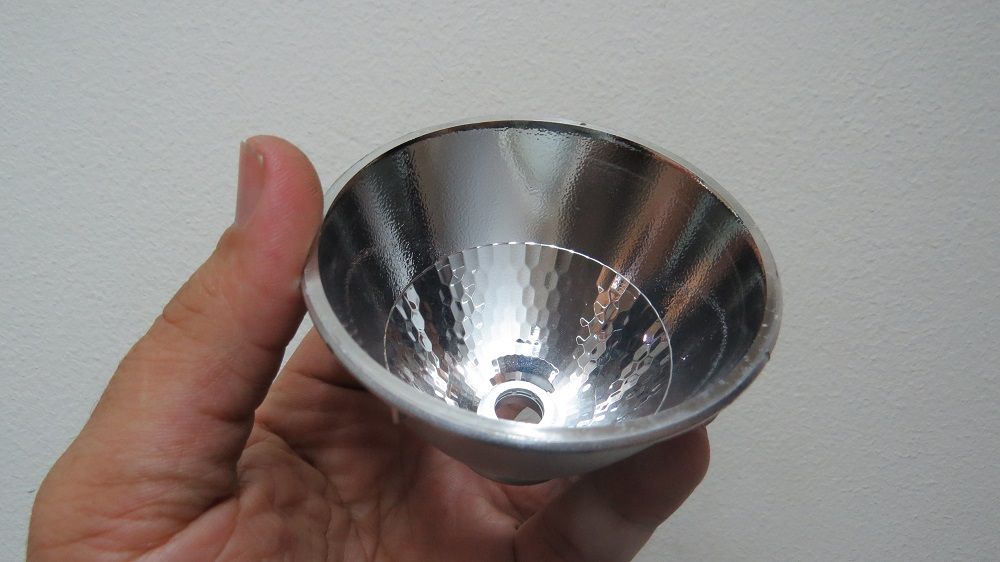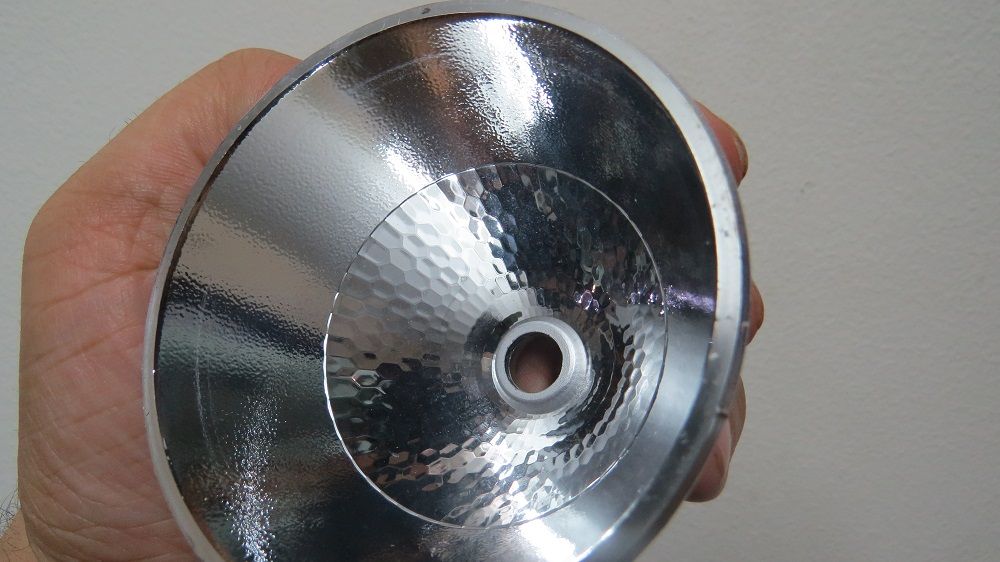I know you ment specifically for this reflector, and since some specialty flood reflectors aren’t actually paraboloid in nature you may be right here. But I just want to clarify this point because I know some people are prone to getting confused when it comes to picking reflectors and the actual differences between reflectors intended for incans vs ones intended for led use.
—
Ultimately there’s really no geometric difference between a paraboloid reflector intended for incan use vs one designed with an led in mind.
You’ll find incans designed for throw will also use a paraboloid reflector, the only difference is that the light emitting “surface” of an incan bulb is a thin filament suspended essentially in mid air and not a flat surface that by necessity of heatsinking is best placed at the end of the reflector. The filament is also emitting light in all directions vs an led which only emits light over a 180 degree area (at best).
Because of these two factors an incan bulb can take advantage of a parabolic reflector that has it’s focal point further towards the front of the light, this automatically makes the base of the reflector look more bowl shaped. At the same time it acts something like a recoil reflector by also catching and projecting any light that gets emitted backwards from the filament.
For LED reflectors we are simply cutting off or flattening out the useless bowl end of the paraboloid, this is usually done right at the focal plane of the parabola since leds don’t emit light behind themselves.
Simply taking a reflector designed for incan use and placing an led at the base of the bowl will not project a good beam, since the led would be badly out of focus.
However, raising that emitter on a pedestal to the center of where the incan bulb filament would have been (the focal point of the parabola) will project a perfect hotspot.
As would turning down the end of the incan reflector past the focal plane or course.
It’s all about getting the light emitting object as close as possible to the focal point of the reflector, or in the case of a quad die emitter…very slightly out of focus 
Here’s some quick examples I made up, since I’m just in the process of fiddling with all things reflectors in 3d software. 
Both of these reflectors are based of a single complete paraboloid surface, the only thing different is how the end of the reflector past the focal point is treated.

Below is what these two reflectors would look like in 3d, again absolutely identical except what goes on past the focal plane. Look remarkably different don’t they?

Shows how an incan and led specific reflector can look very different, have a different perceived depth and one may look more “bowl” like than the other but are in fact absolutely identical geometrically and therefore also identical in how they project a beam.




